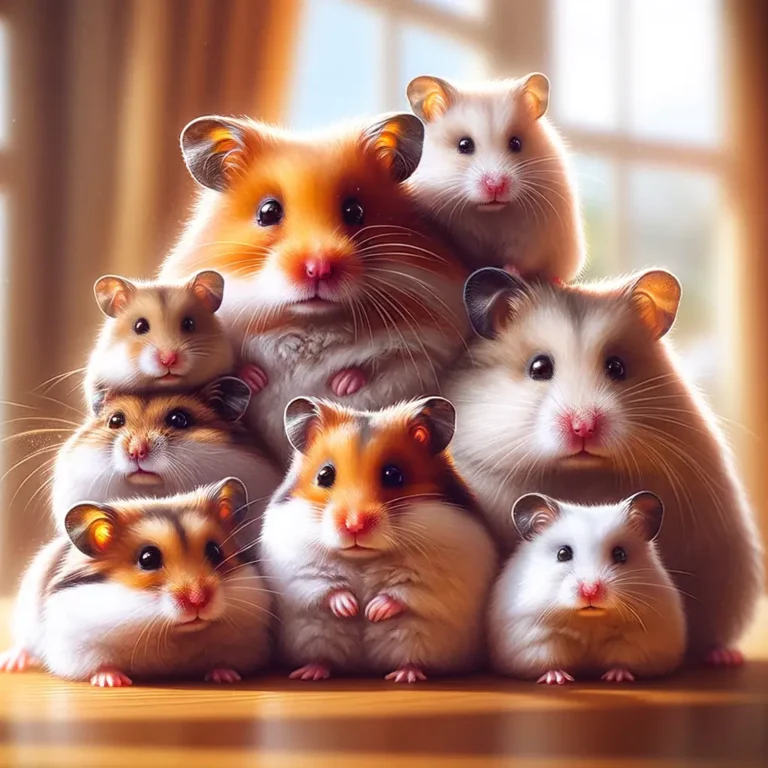The world of pet hamsters is diverse and enchanting, with several breeds each possessing unique characteristics, behaviours, and care requirements. Whether you’re a first-time hamster owner or a seasoned enthusiast looking to expand your knowledge, understanding the differences between these breeds can help you choose the perfect furry companion. This comprehensive guide delves into the wonderful world of pet hamster breeds, exploring their origins, personalities, and what makes each of them special.
Introduction to Hamster Breeds
Hamsters belong to the family Cricetidae and are popular pets due to their small size, relatively easy care, and adorable appearances. While there are over 20 species of wild hamsters, only a few have been domesticated and are commonly kept as pets. These include the Syrian hamster (also known as the Golden or Teddy Bear hamster), the four species of Dwarf hamsters (Campbell’s, Winter White, Roborovski, and Chinese), and occasionally, the European hamster for those seeking a larger, more unconventional pet.
Syrian Hamsters: The Solitary Charmer
The Syrian hamster, the largest and perhaps most popular among pet hamsters, is renowned for its solitary nature and preference for living alone. They can grow up to 6-7 inches in length and have a lifespan of around 2-3 years. Syrians are known for their docile temperament, making them excellent pets for children and adults alike. They come in a variety of colours and coat types, including short-haired, long-haired (known as “Teddy Bear”), and even hairless varieties.
Dwarf Hamsters: The Social Critters
Dwarf hamsters, including the Campbell’s, Winter White, Roborovski, and Chinese, are smaller than their Syrian counterparts, usually measuring 2-4 inches in length. These breeds are more social and can often be kept in pairs or small groups if introduced properly and monitored for any signs of aggression.
- Campbell’s Dwarf Hamster: Known for its adaptability and friendly nature, Campbell’s dwarf hamsters are popular pets. They come in various colours and are known for their playful demeanour.
- Winter White Russian Dwarf Hamster: Similar in size and behaviour to the Campbell’s, Winter Whites are unique for their ability to change coat colour in winter months, turning almost completely white.
- Roborovski Dwarf Hamster: The smallest of the pet hamster breeds, Roborovskis are fast and energetic, making them less suitable for handling but fascinating to watch.
- Chinese Hamster: Slightly larger and with a more elongated body, Chinese hamsters have a gentle disposition and distinctive appearance, thanks to their longer tail.
European Hamsters: The Uncommon Giant
The European hamster is not commonly kept as a pet due to its larger size (up to 12 inches in length) and more complex care requirements. They are known for their solitary nature and require a significant amount of space to roam.
Choosing the Right Breed for You
When selecting a hamster breed, consider your living situation, the amount of time you can dedicate to care and interaction, and whether you’re looking for a hamster to handle frequently or observe in its habitat. Syrians are ideal for those seeking a solitary, interactive pet, while Dwarf hamsters offer an opportunity to observe social interactions among cage mates.
Care and Habitat Requirements
Regardless of the breed, all hamsters require a clean, spacious habitat with ample bedding for burrowing, a wheel for exercise, and access to fresh food and water. However, the specific care requirements can vary slightly between breeds, particularly in terms of social housing for Dwarfs and the larger space needed for Syrians.
Health and Lifespan
Most pet hamster breeds have a lifespan of 2-3 years, although this can vary based on genetics, diet, and overall care. Common health issues include dental problems, obesity, and, in some cases, diabetes, particularly in Campbell’s Dwarfs. Regular veterinary check-ups and a well-balanced diet can help ensure a long, healthy life for your pet.
Conclusion
The world of pet hamsters is rich with diversity, offering a variety of breeds each with its own unique appeal. Whether you’re drawn to the solitary Syrian, the sociable Dwarf, or even the rare European hamster, understanding the specific needs and characteristics of each breed is crucial for creating a loving, suitable home for your furry friend. By providing the proper care, habitat, and attention, you can enjoy the company of these charming creatures and explore the wonderful world of pet hamster breeds to its fullest.









